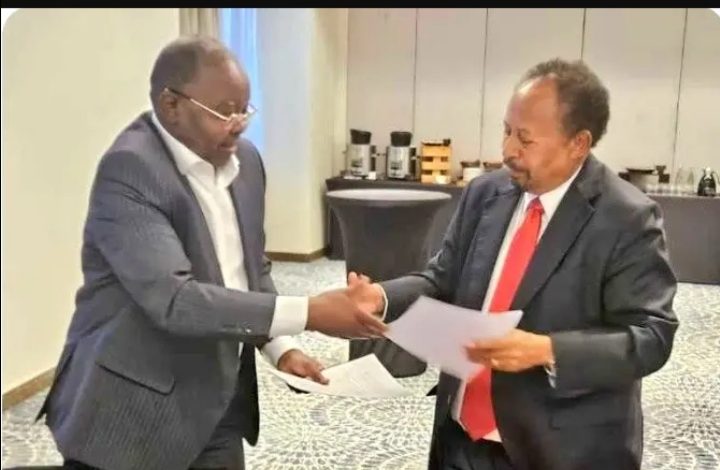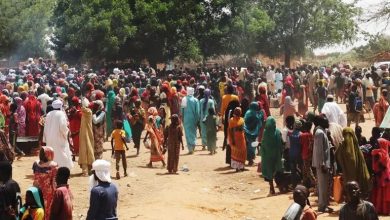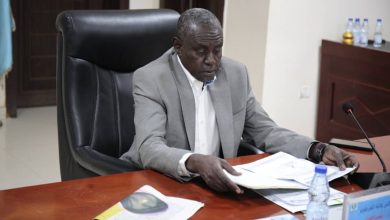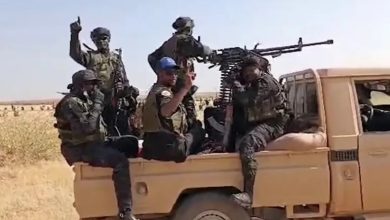Hamdouk and Abdul Wahed…an Attempt to Impose a Veto on the Will of Sudanese people

Sudan Events – Abdul Basset Idris
Finally, former Prime Minister Abdullah Hamdouk joined the race for the document ceremony that took place recently by signing two documents with the same content with Abdul Wahed Nour and Abdul Aziz Al-Hilu.
Beware of being rude
Hamdouk’s agreement with Al-Hilu and Abdul-Wahed included three basic points, which are the establishment of a secular state. If this is not included in the constitution, the Sudanese peoples have the right to exercise the right to self-determination. The third is organizing a round table with the forces that believe in the tripartite agreement.
During his presidency of the transitional government, Hamdouk had previously concluded understandings with Abdul-Wahed Nour – who is reserved about the FFC group – regarding what was stated in the recent Nairobi Declaration, just as he did with the head of the North Sudan People’s Liberation Movement(SPLM) , Abdulaziz Al-Hilu, where they signed an agreement together in Addis Ababa that contained the same texts as the recent Nairobi agreement.
At the time, the military component rejected it by a member of the Sovereign Council, Lieutenant General Shams Al-Din Kabashi. Kabashi said that the agreement between Hamdok and Al-Hilu is considered a promise from those who do not have to those who do not deserve it, indicating that the basic issues must have decisions made by a government elected and delegated by the people.
Dimensions of the agreement:
The agreement comes within the framework of a heated race between civilian forces and armed militias, perhaps as a response to external pressures exerted on the parties regarding the necessity of agreeing on a political vision for managing the transitional phase.
It seems that Hamdouk is trying to jump off the boat of Taqaddum, which is mired in the differences of its components, and move towards an alliance with the solid bloc of armed movements represented by Nour and Al-Hilu movements, which is the same agreement that makes Hamdouk meet with the forces of radical change and the resistance committees after he lost much of his popularity after his undisguised bias towards a militia leader, Hemedti. The agreement with Al Hilu and Nour movements, which are members of the Forces for Radical Change, may reproduce Hamdouk’s popularity as one of the important bets for many external circles to lead the transitional phase. This means that Hamdouk, who in its first version was an expression of the interests of global and regional capital groups and an implementer of the prescription What was termed “the farm group” and “the children of the forum” by leading a flexible transitional period, and to explain the dimensions of the Nairobi Declaration, the founding stage according to this declaration relied on revolutionary violence and the imposition of the opinions and orientations of limited groups, and most importantly, its reliance on armed violence.
Disrupting the Sudanese dialogue:
The leader of the Sudanese Baath Party, Mohammad Wadaa, said in his comment on the Nairobi Declaration that the signatories of the declaration set conditions and obstacles to the Sudanese-Sudanese dialogue.
The Constitutional Conference was held, as they considered it the only way to achieve consensus or agreement on a permanent constitution that was voted on by the Sudanese people. Wadaa believes that the signatories of the Nairobi Declaration are putting a veto on the will of the Sudanese people if they agree on a permanent constitution.
Third transformation:
For his part, the political analyst, Ibrahim Osman, says to (Sudan Events) that Hamdouk’s movements reveal parties working to push him to play a role during the period after the war, and Osman believes that Hamdouk has exhausted his purposes for most Sudanese who placed great hopes on him after the revolution, and he has no longer something to offer now, because, according to Ibrahim, Hamdouk does not start from one vision, just as he does not stand at one distance. Ibrahim believes that Hamdok, at the beginning of the war, appeared from the platform of humanitarian situations and the delivery of aid, but he collided with the reality of the absence of camps in relation to the nature and traditions of the areas where the war broke out, as well as according to Osman, he failed to mobilize financial support for humanitarian aid. After Hamdouk’s tours in this context, the United Nations said that the international response was very little to the call for aid to Sudan. Ibrahim Osman goes on to say that in the second shift, Hamdouk led Taqaddum and became as if he was allied with the militia leader Hemedti, as his meetings with him showed. His media statements at least show these tendencies. As for the latest shift, according to Ibrahim, it is jumping off the Taqaddum boat and allying with Aqar and Al-Hillu. Ibrahim points out that the depth of the differences within Taqaddum and the Cairo group’s opinion of Hamdouk’s leadership of it.



